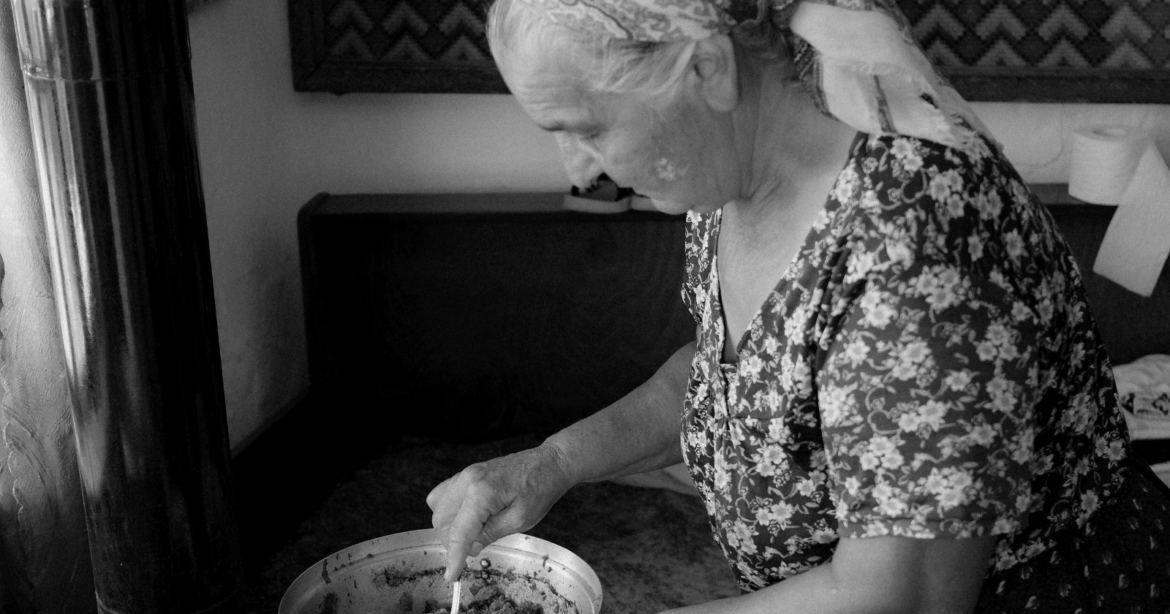There’s something oddly circular about food trends. The recipes people developed during the Great Depression—born from pure necessity when eggs and butter were luxuries—have quietly become the foundation of modern vegan cooking. These accidentally plant-based dishes that helped families survive the 1930s are now showing up on Instagram with hashtags like #plantbased and #sustainableeating.
The psychology here is fascinating. We’re not eating these foods because we have to anymore. We’re choosing them because they align with our values around health, sustainability, and animal welfare. What was once survival has become philosophy.
Let’s look at five Depression-era staples that became vegan trends without even trying.
1. Wacky Cake (Depression Cake)
Back in the 1930s, families created this chocolate cake when milk, eggs, and butter were either too expensive or simply unavailable. They mixed flour, sugar, cocoa powder, baking soda, oil, vinegar, and water directly in the baking pan. No eggs. No dairy. Just chemistry and desperation.
The cake works because vinegar reacts with baking soda to create lift, while oil provides moisture without the richness of butter. It shouldn’t work, but it does. And now this “wacky cake” has become a staple in vegan baking blogs everywhere.
The difference? Depression-era cooks would dust it with powdered sugar if they had any. Today’s versions get topped with elaborate vegan buttercream and shared on Pinterest as proof that plant-based baking isn’t about sacrifice.
I’ve made this cake. It’s genuinely good. Even people skeptical of vegan desserts go back for seconds without realizing it contains no animal products.
2. Lentil soup
During the Depression, families stretched every ingredient to its limit, and protein-packed meals like lentil soup became staples. Dried lentils were cheap, stored well, and when combined with whatever vegetables you could grow or afford, created a filling meal.
Fast forward to 2024, and lentil soup dominates vegan recipe blogs. Scroll through any plant-based cooking site and you’ll find dozens of variations—Middle Eastern styles with cumin and lemon, Italian versions with tomatoes and herbs, Indian-inspired curries.
The appeal hasn’t changed much. Lentils remain inexpensive and nutritious. But now we’re adding them to our rotation because of their high protein content and sustainability rather than because meat is out of reach.
What’s different is the framing. Previous generations made lentil soup because they had to. We make it because we want to.
3. Baked beans
Beans served as the basis of many Depression-era dishes thanks to their low cost and availability, with baked beans becoming a popular side dish or sometimes a full meal. Navy beans slow-cooked with molasses and whatever seasonings you had on hand could feed a family for days.
Today, baked beans have shed their “cheap food” reputation and landed squarely in the trendy plant-based protein category. The exact same recipe—beans, tomato sauce, sweetener, spices—now gets celebrated on #MeatlessMonday posts and appears on brunch menus at places where a single serving costs more than a can.
The psychology of reframing is powerful. We’ve taken food that signaled poverty and repositioned it as conscious consumption. Same beans, different story.
4. Dandelion greens
People during the Depression weren’t being cute when they went out to their front lawns to pick dandelion greens for salad. They were eating weeds because that’s what was available and free. Dandelions required no cultivation, no money, no trip to a potentially empty grocery store.
Now? Foraging for dandelion greens has become a whole aesthetic. Urban foraging classes teach people to identify these “nutrient-dense wild edibles.” Restaurants charge premium prices for foraged greens salads. Instagram influencers post photos of themselves harvesting dandelions with captions about connecting with nature.
Dandelion greens are packed with vitamins and minerals, ranking higher than lettuce in protein, carbohydrates, calcium, and iron. Depression-era families knew this intuitively because eating them kept malnutrition at bay. Modern wellness culture rediscovered it through nutritional analysis.
The difference is choice. They ate dandelions because groceries were empty. We eat them because we’re trying to be more sustainable.
5. Peanut butter bread
This quick bread emerged during the Depression when people couldn’t afford butter, eggs, or even yeast for traditional bread-making. The recipe called for flour, baking powder, milk (or water when milk wasn’t available), sugar, and peanut butter. That’s it.
The bread made a comeback during pandemic lockdowns when yeast disappeared from store shelves and people turned to their grandparents’ recipes. But it’s remained popular in vegan circles because it requires no eggs, can easily be made dairy-free, and uses pantry staples.
Reddit threads are full of people marveling that it “tastes just like a peanut butter cookie.” Well, yes. That’s what happens when you bake sweetened peanut butter into flour. Depression-era cooks knew this. They just weren’t posting about it.
The bottom line
Here’s what strikes me about this pattern: we’ve reinvented necessity as virtue.
The recipes haven’t changed. Wacky cake in 1933 used the same ingredients as vegan chocolate cake in 2024. What changed is why we’re making them. Depression-era families were solving for scarcity. We’re solving for values.
And maybe that’s okay. Maybe it doesn’t matter that we’re eating these foods for different reasons than our great-grandparents did. The end result is the same: less reliance on animal products, lower environmental impact, more creativity in the kitchen.
I’m just amused that it took a century for these “make-do” recipes to become desirable. Those who lived through that era would probably laugh at people paying $8 for a slice of desperation cake at a vegan bakery.
But they’d also be pleased that nothing went to waste—including their recipes.
What’s Your Plant-Powered Archetype?
Ever wonder what your everyday habits say about your deeper purpose—and how they ripple out to impact the planet?
This 90-second quiz reveals the plant-powered role you’re here to play, and the tiny shift that makes it even more powerful.
12 fun questions. Instant results. Surprisingly accurate.


Dining and Cooking